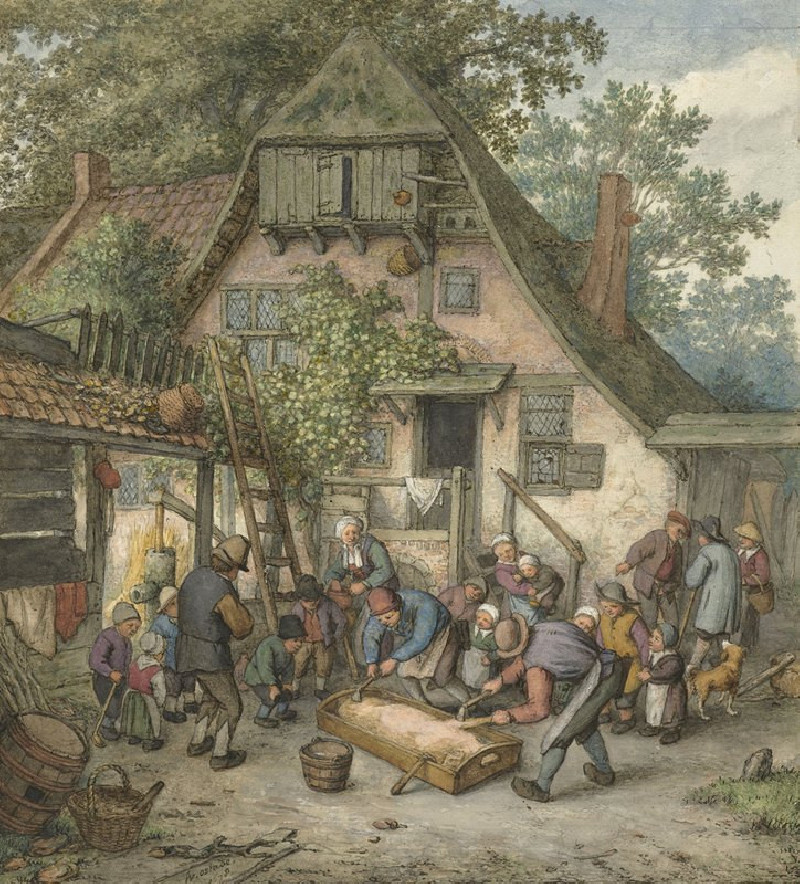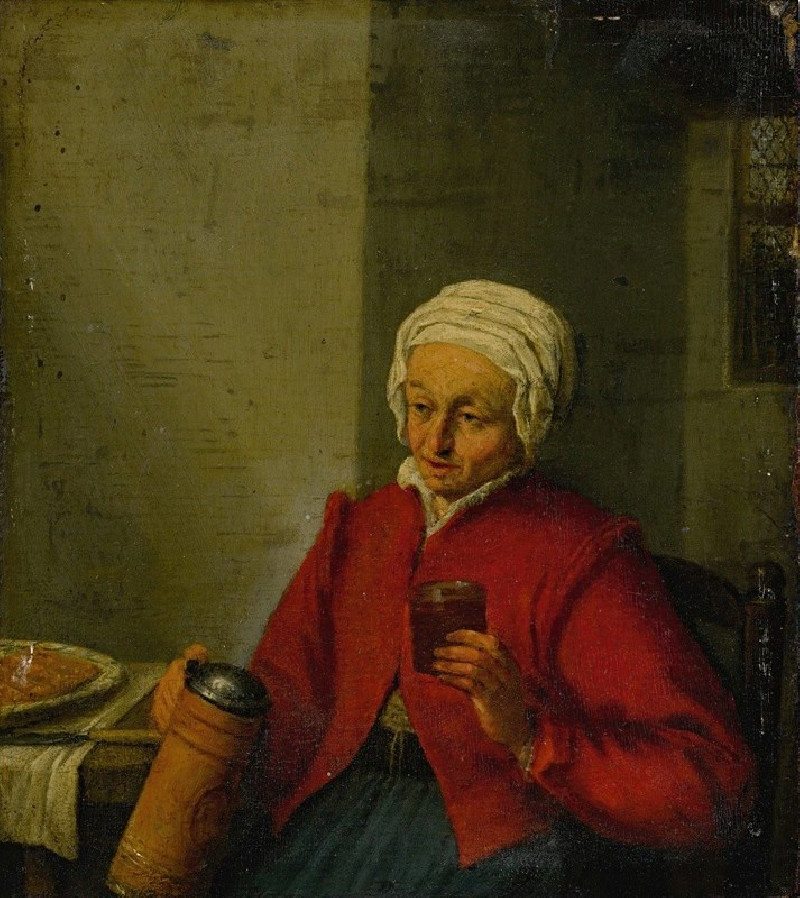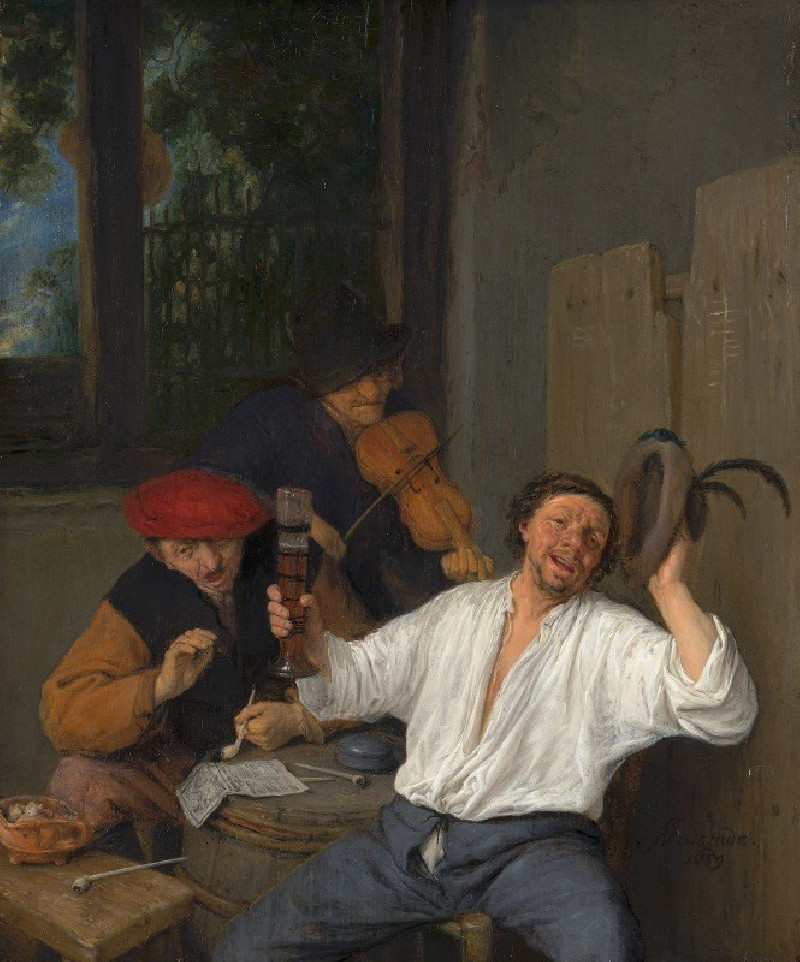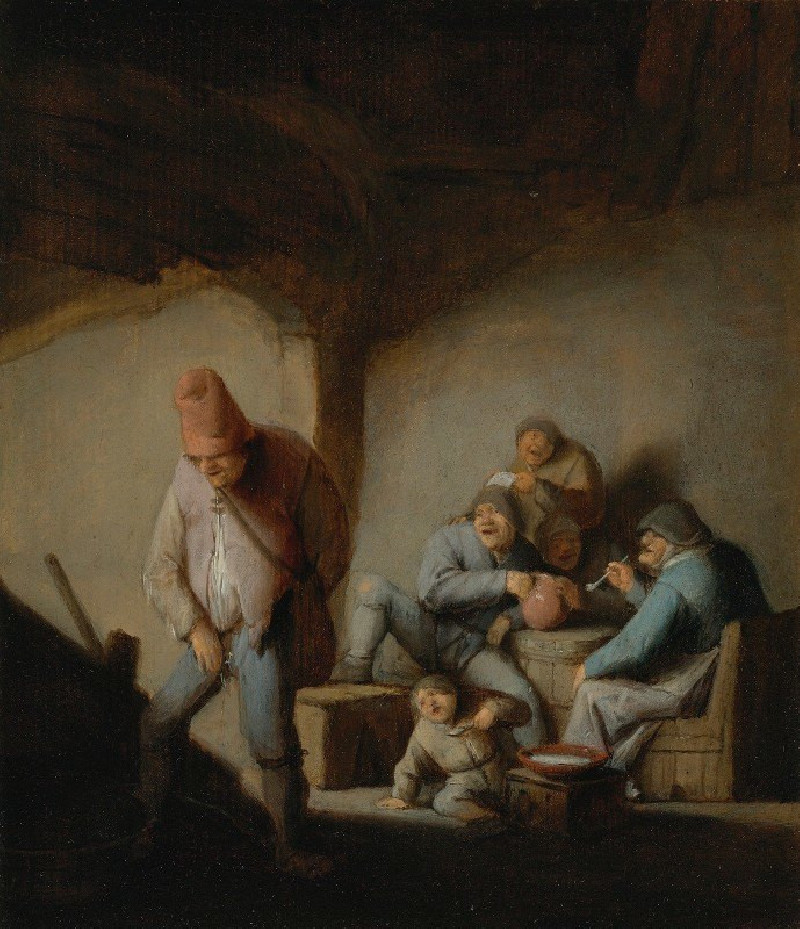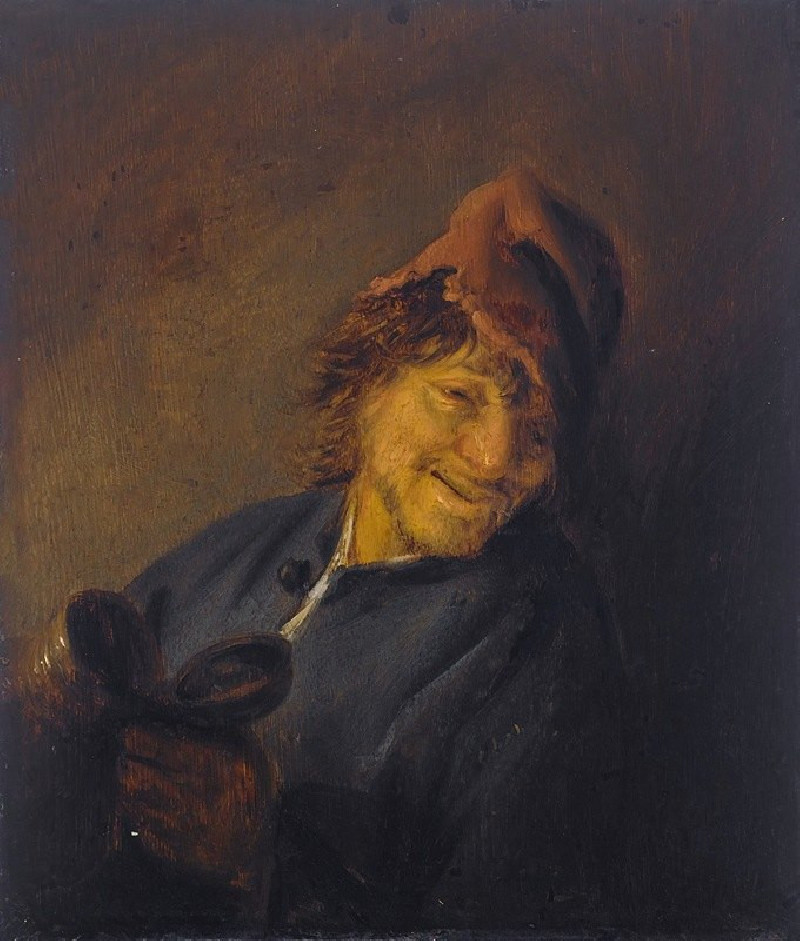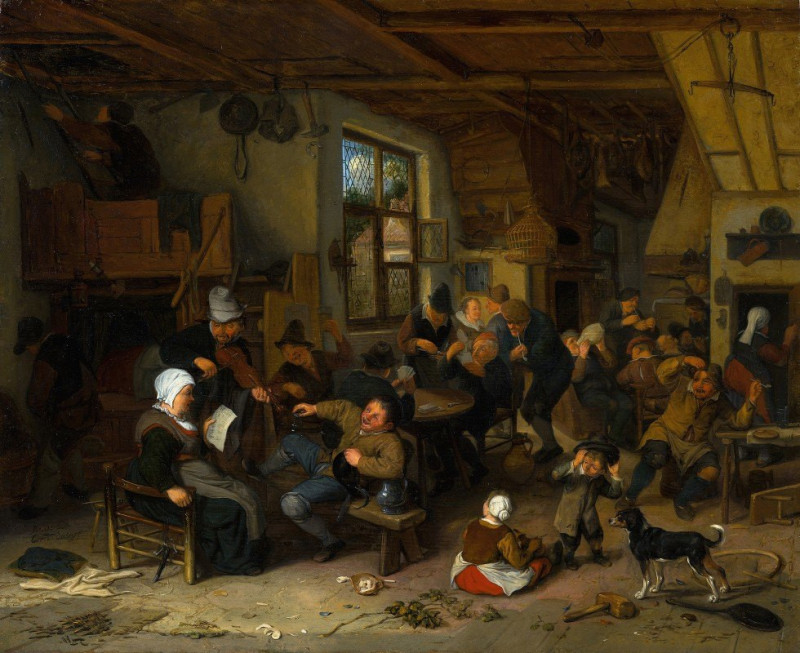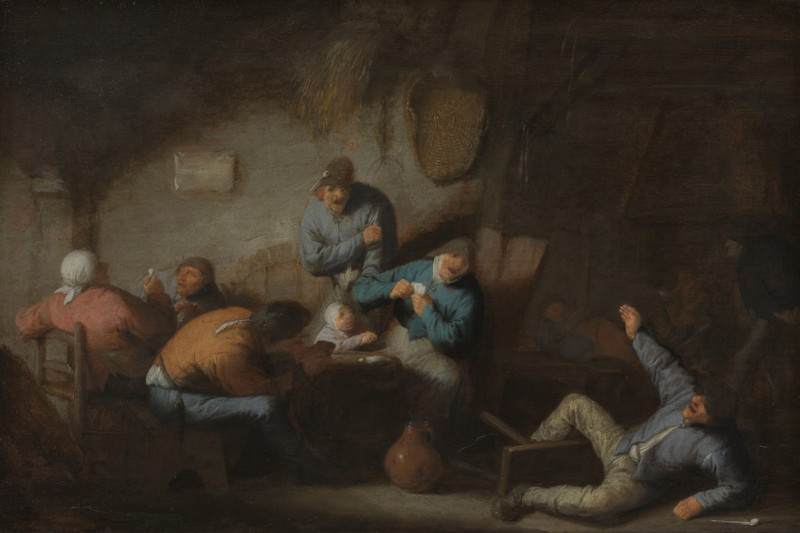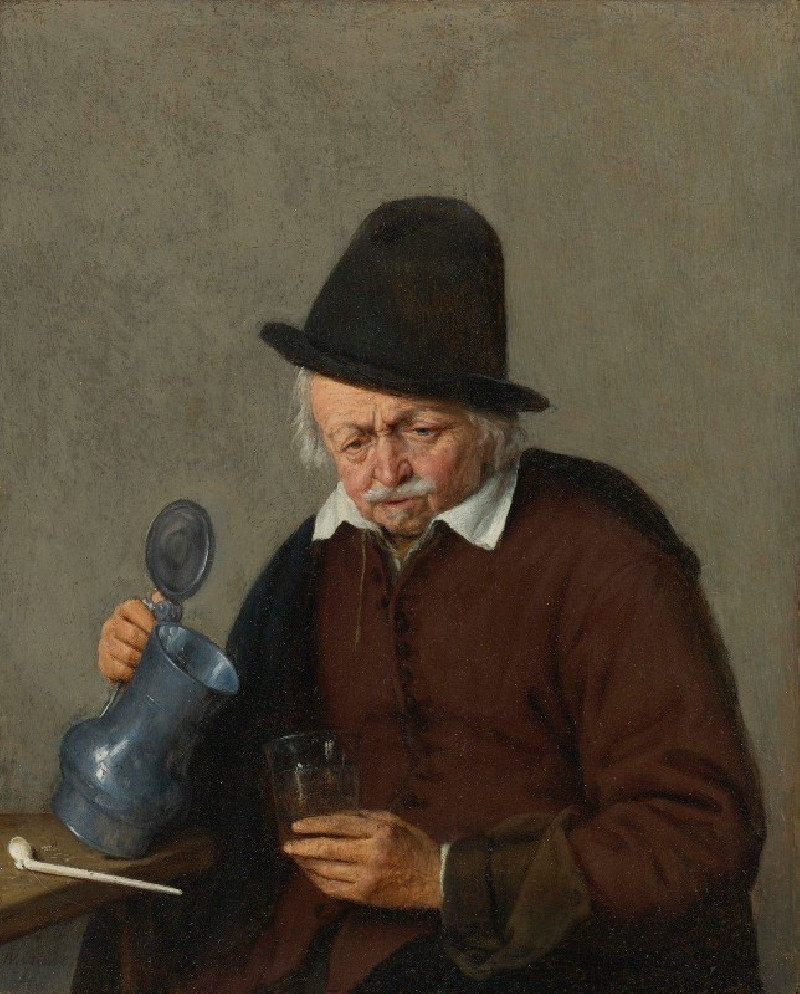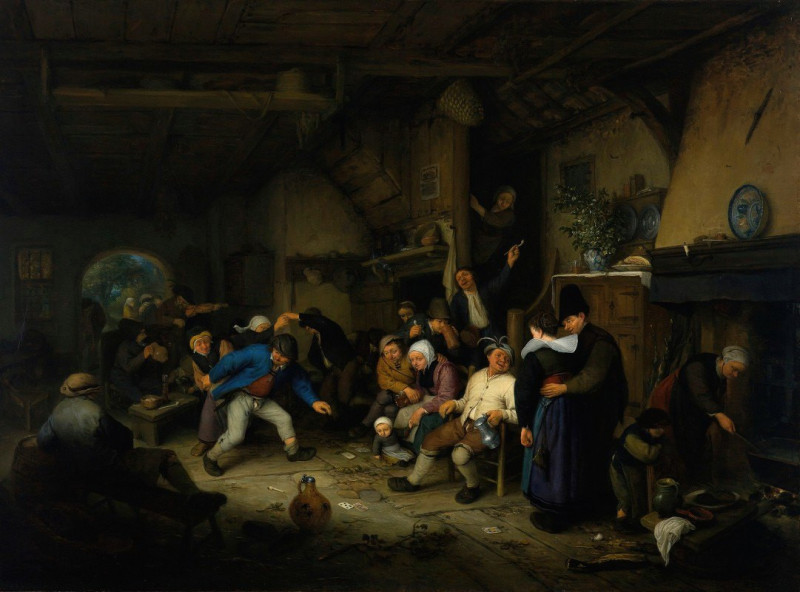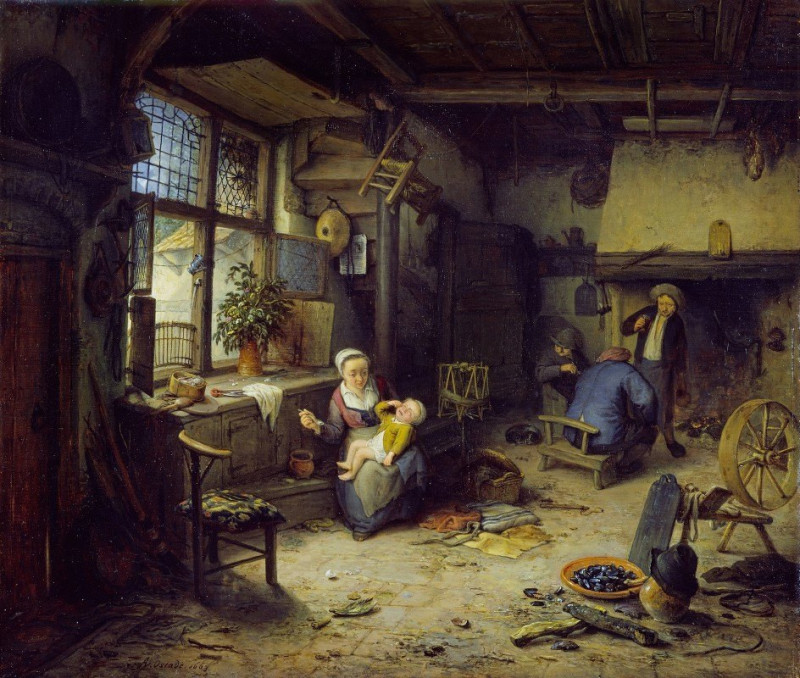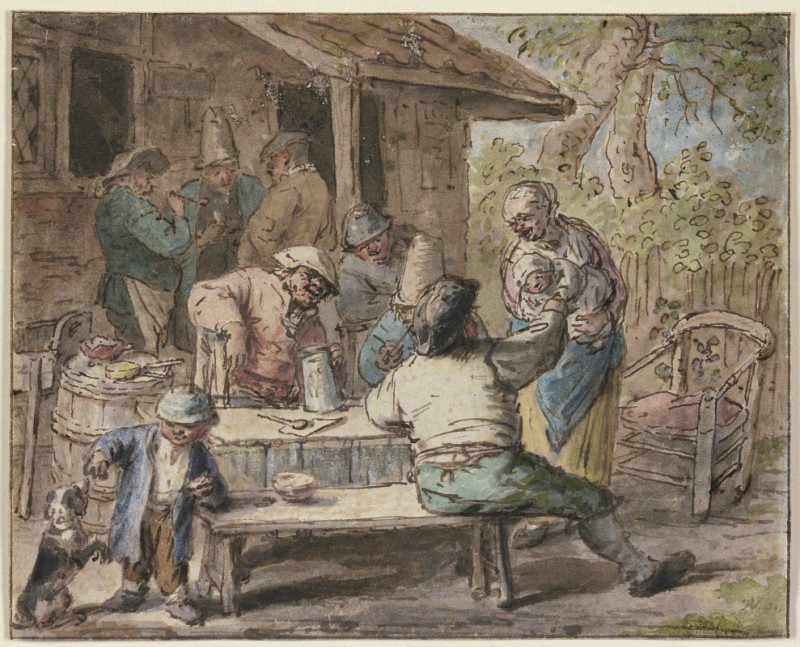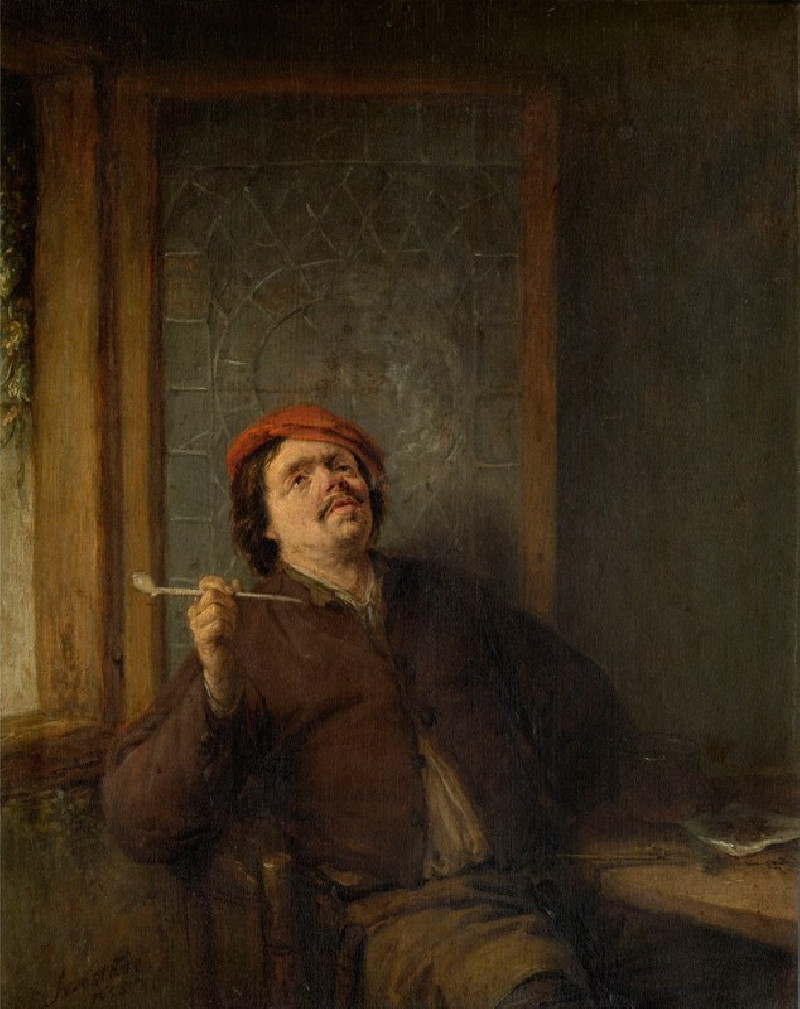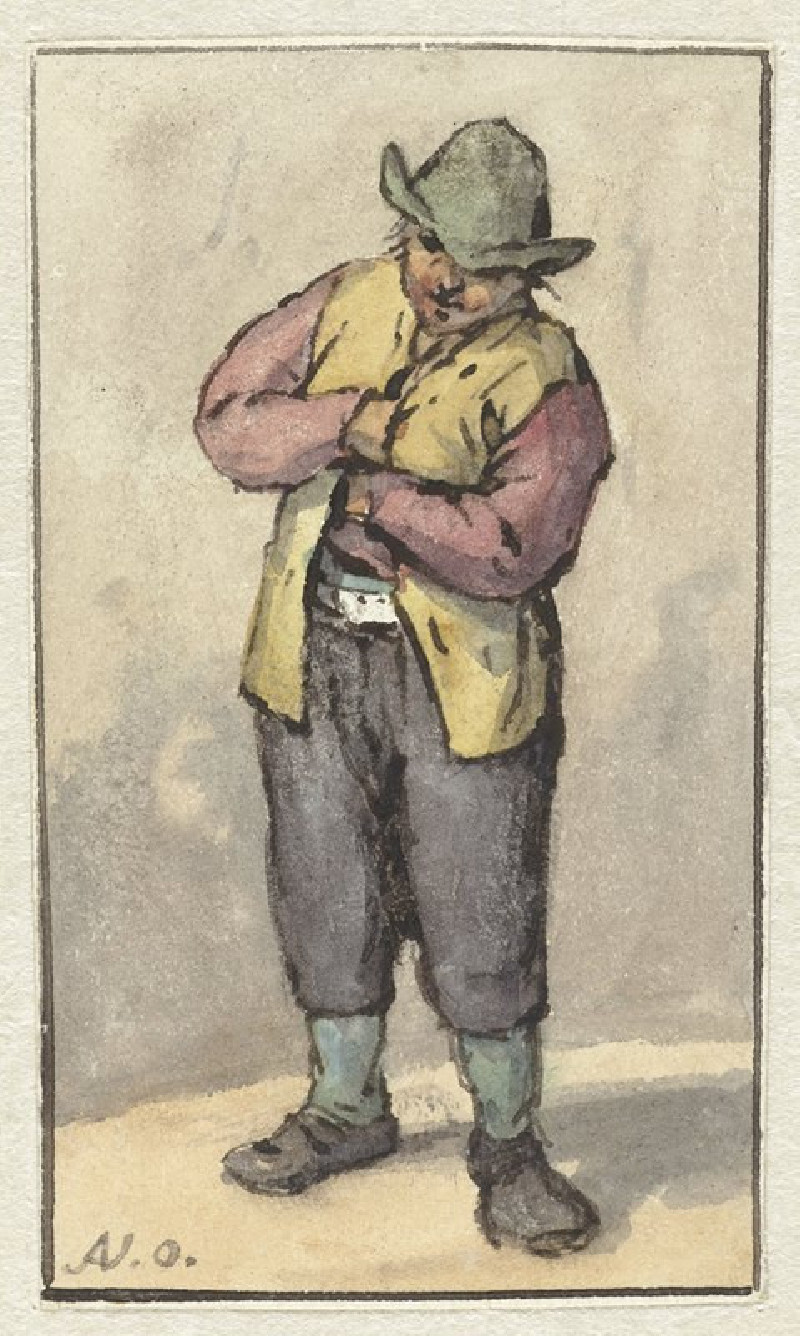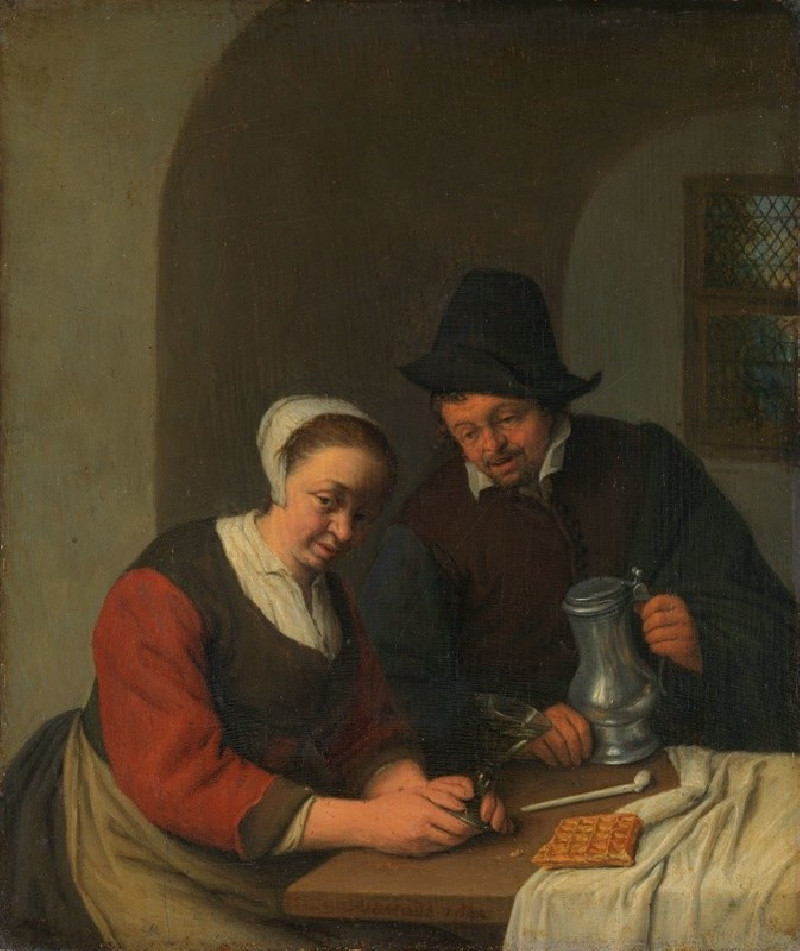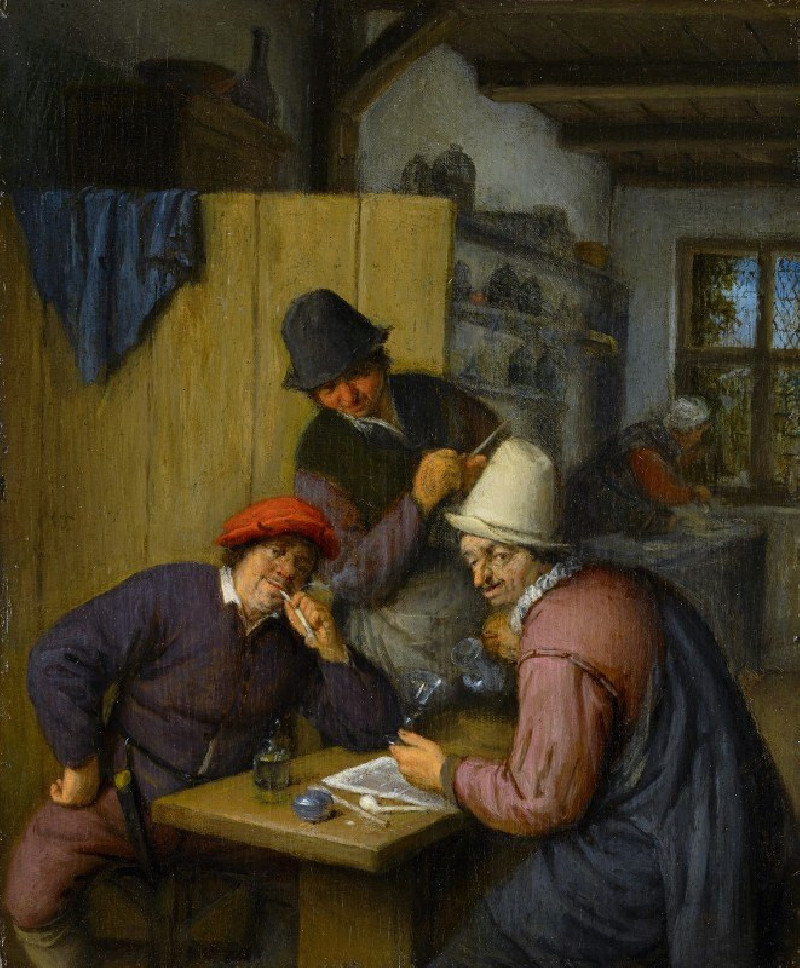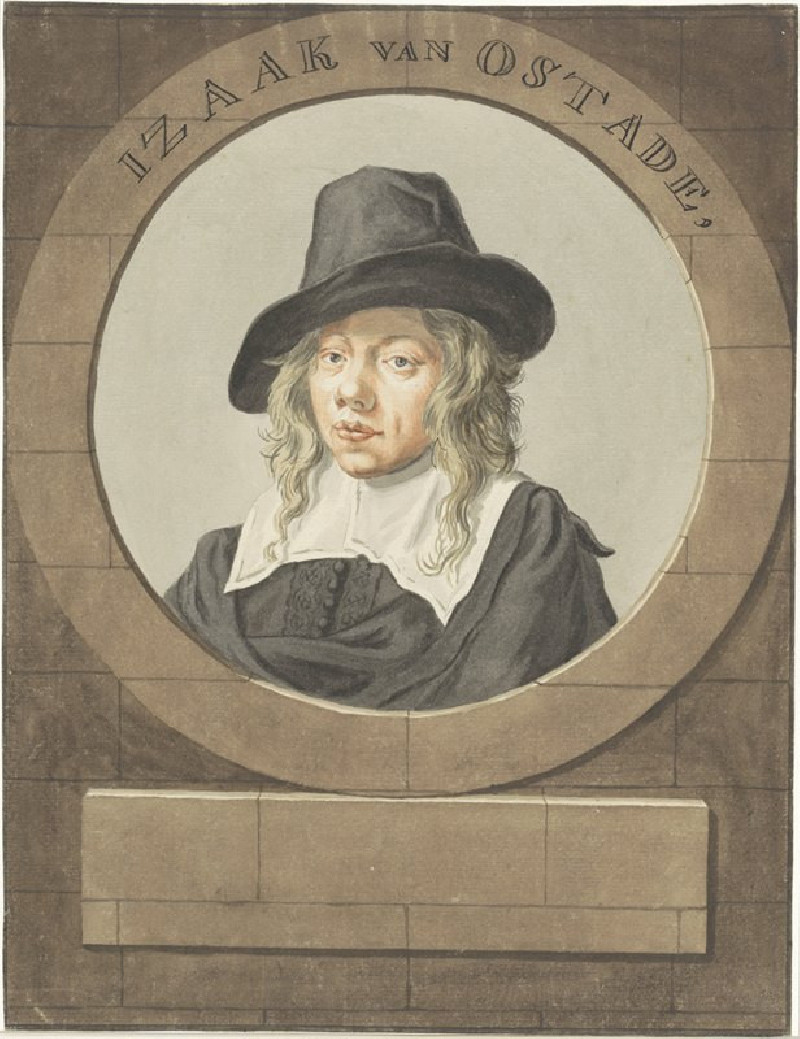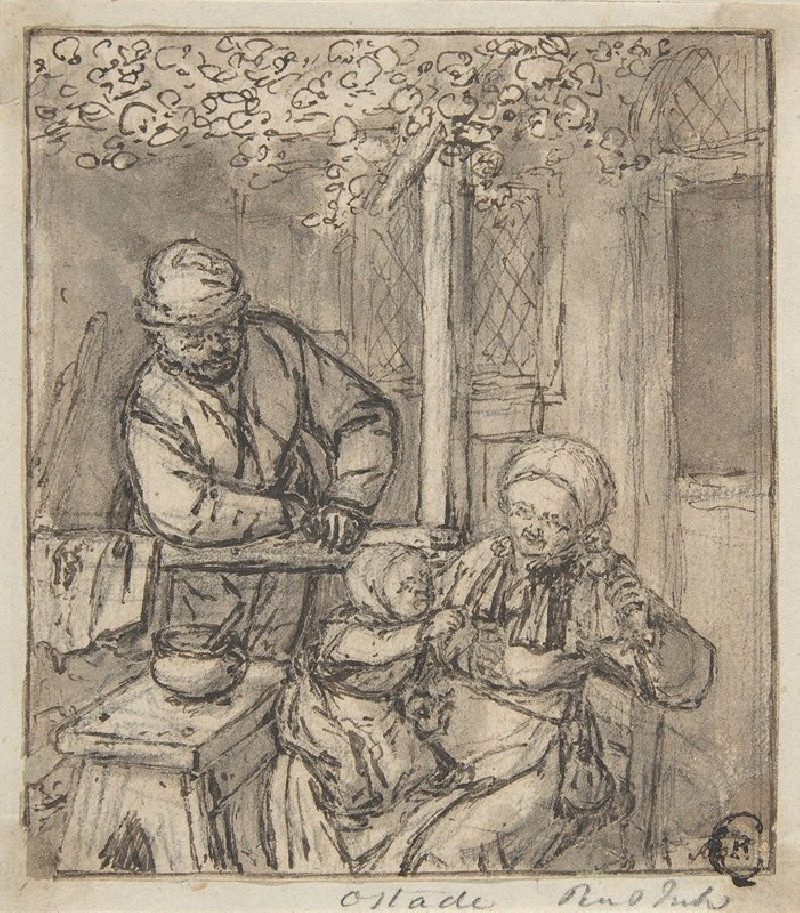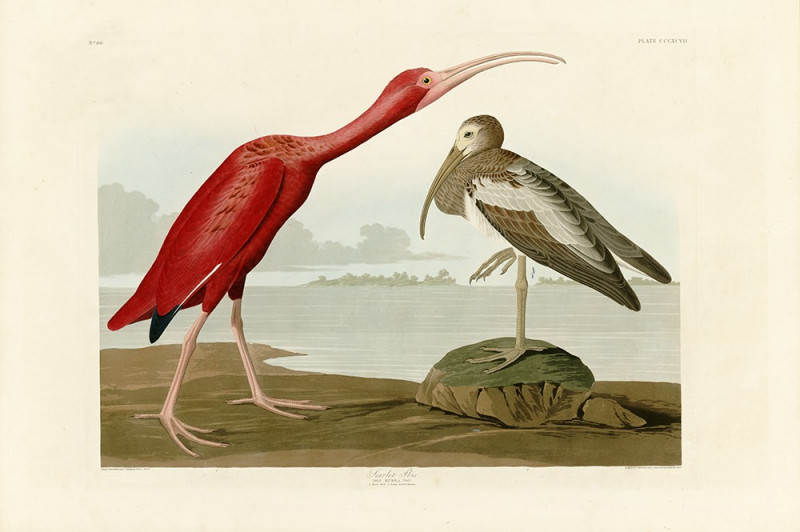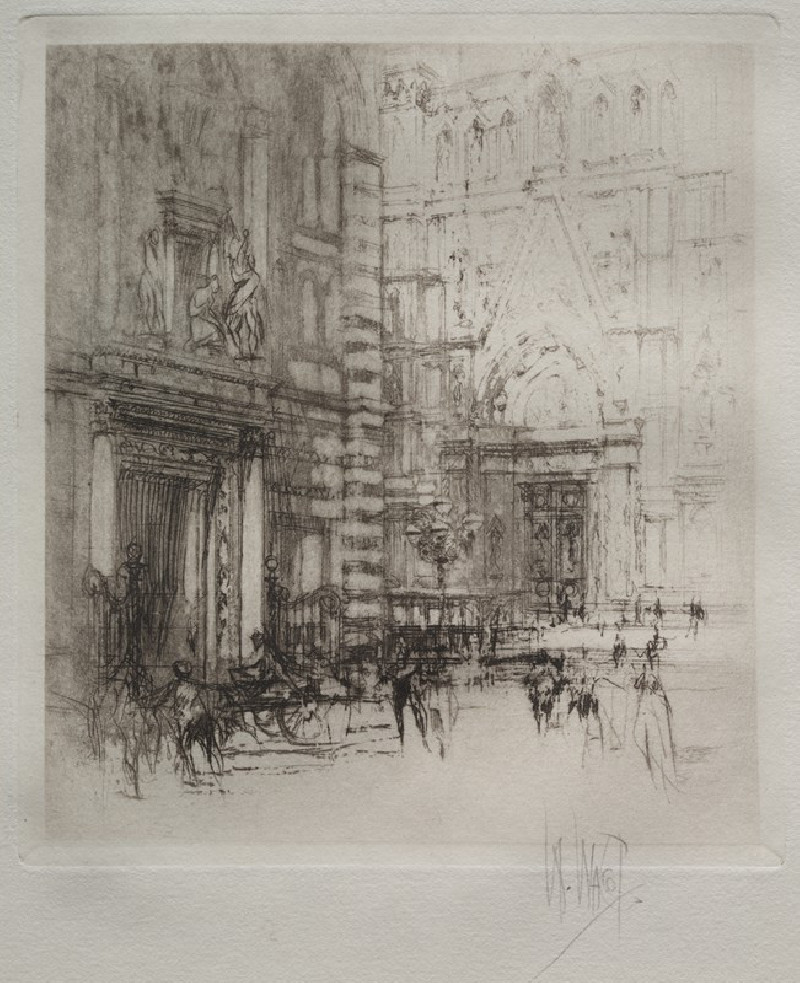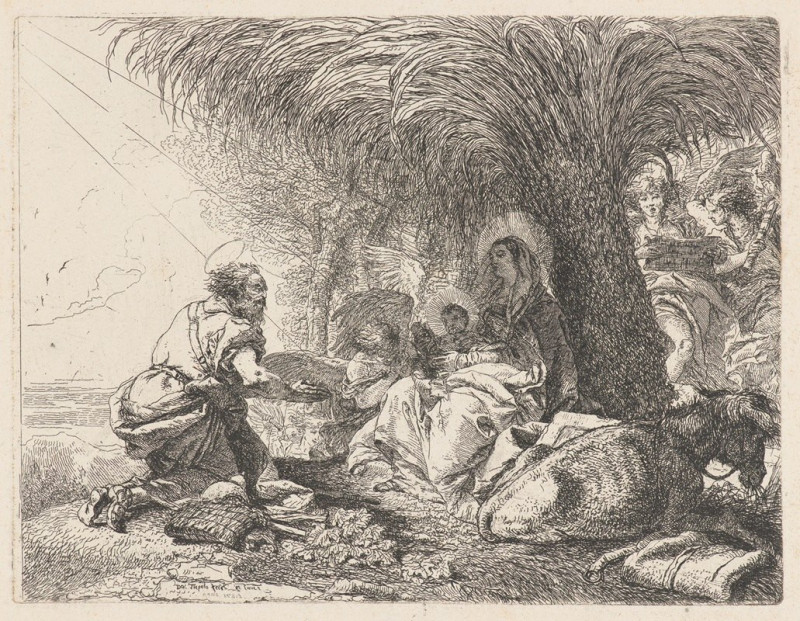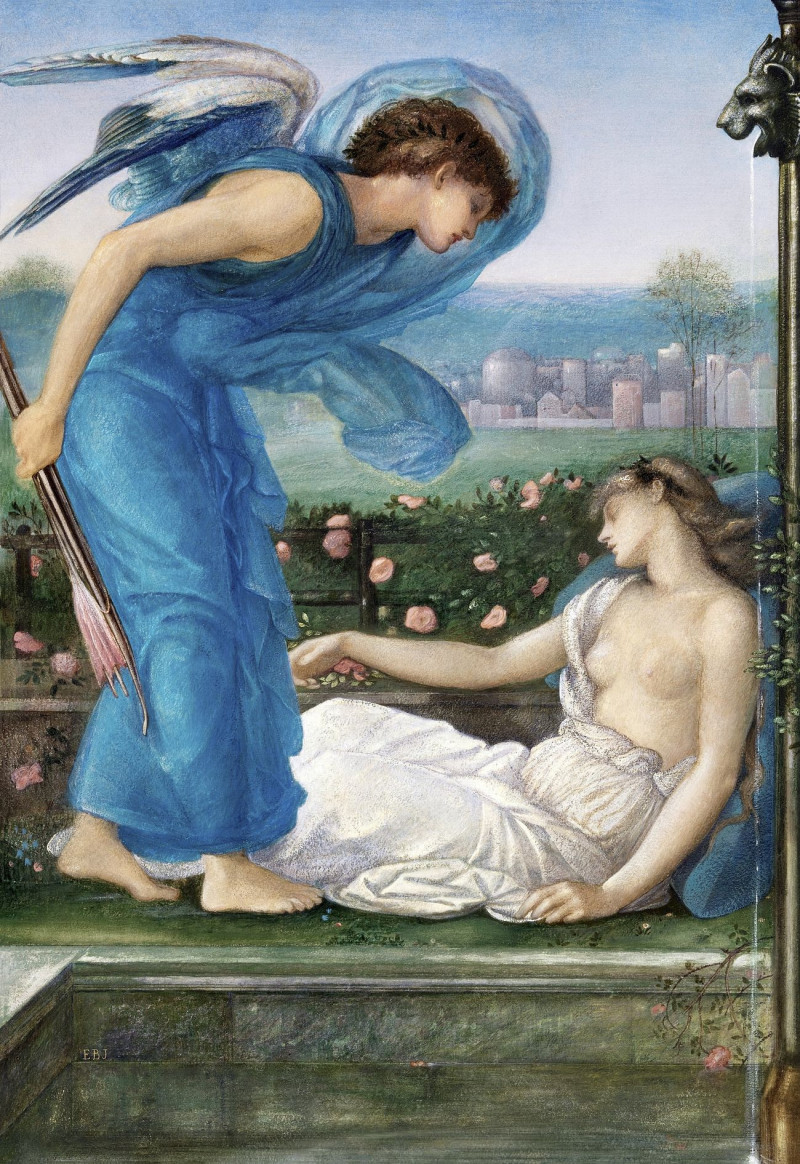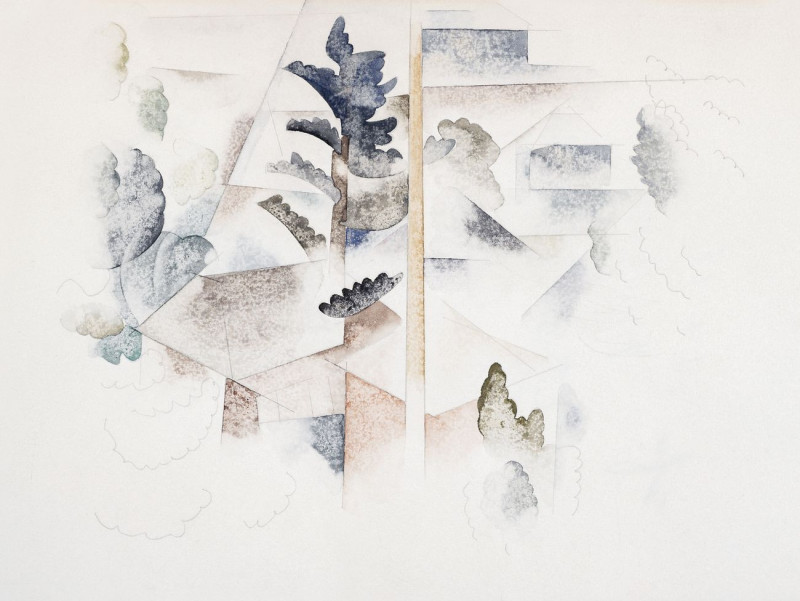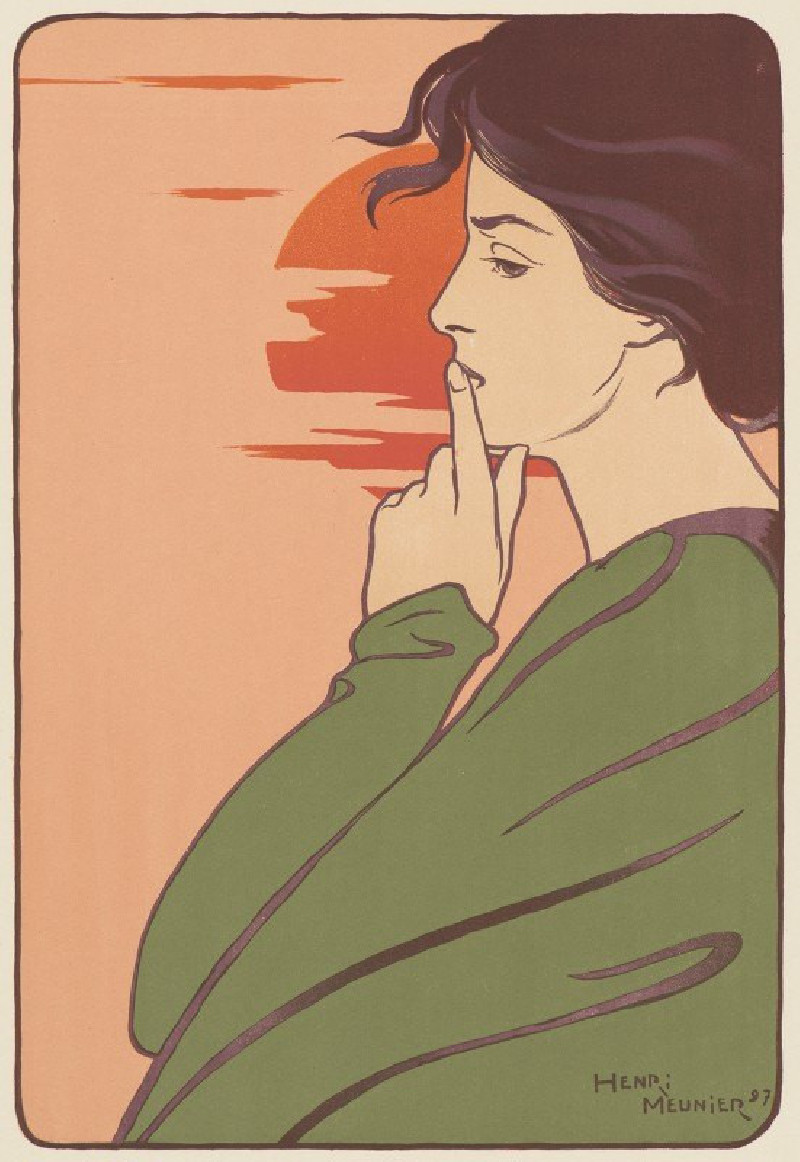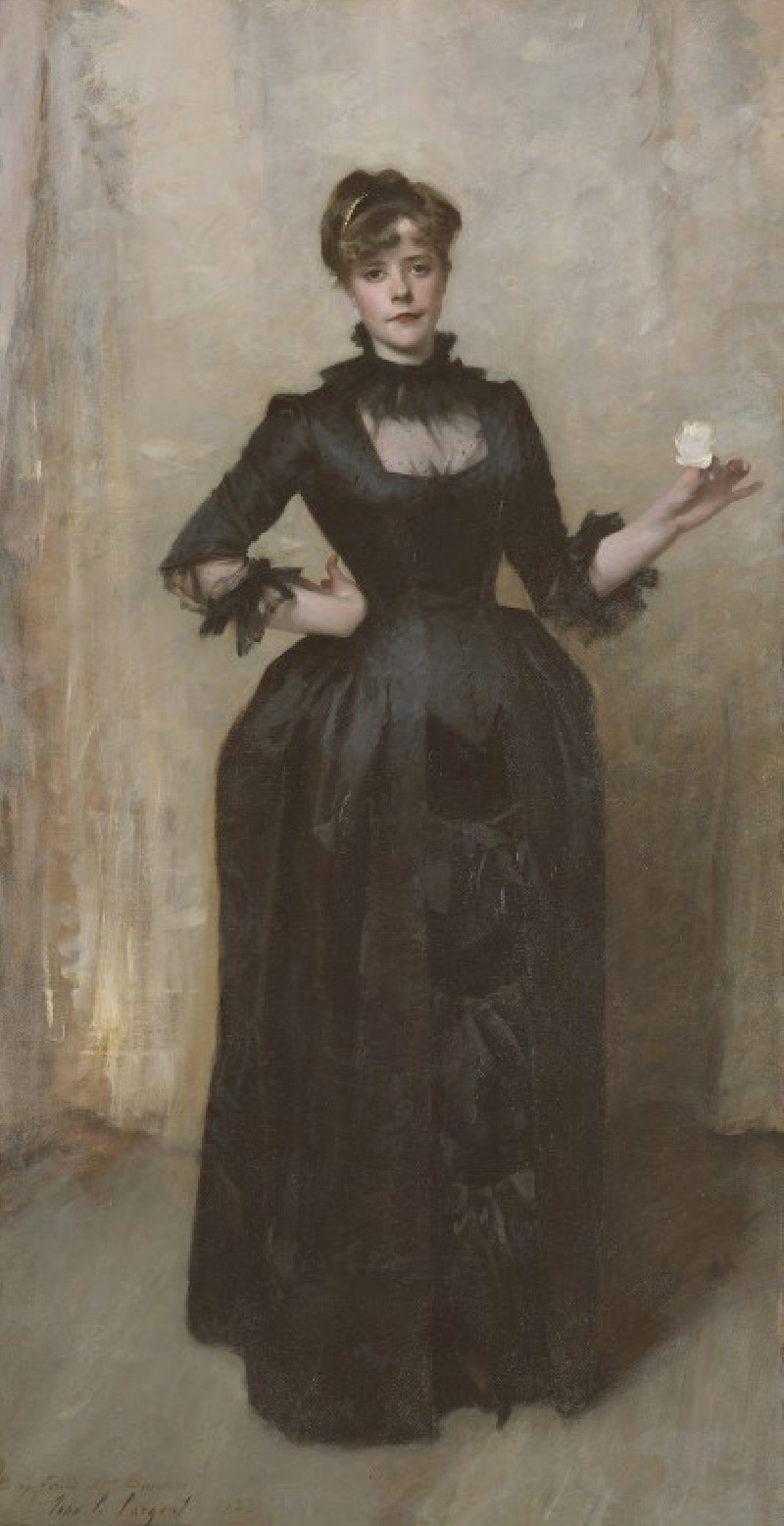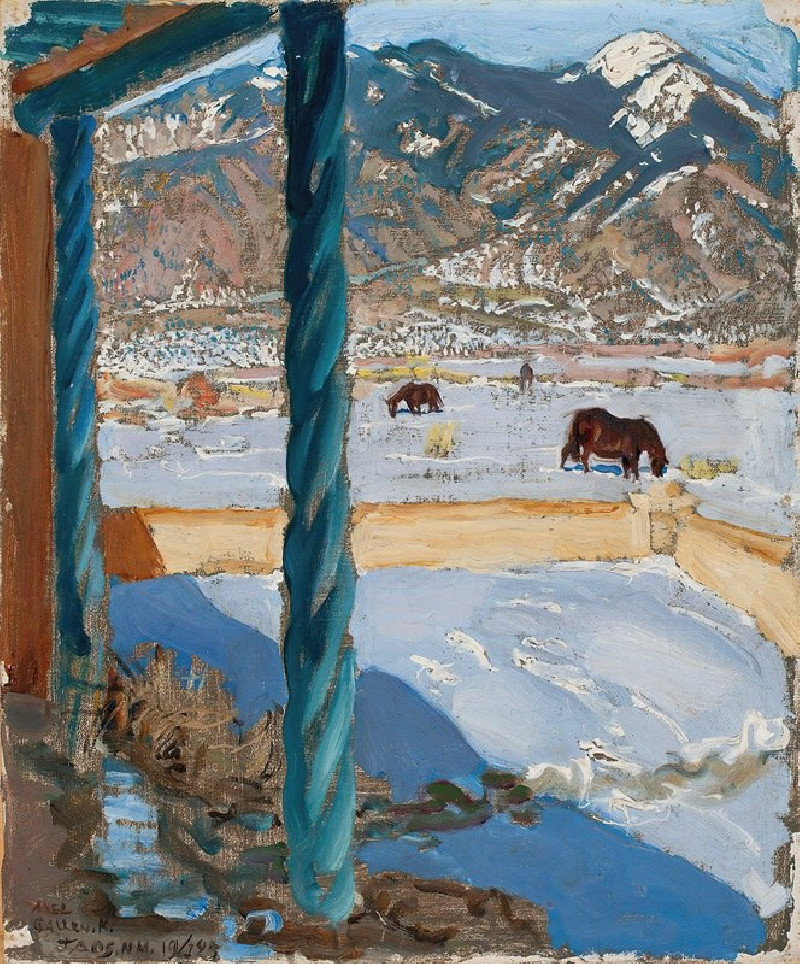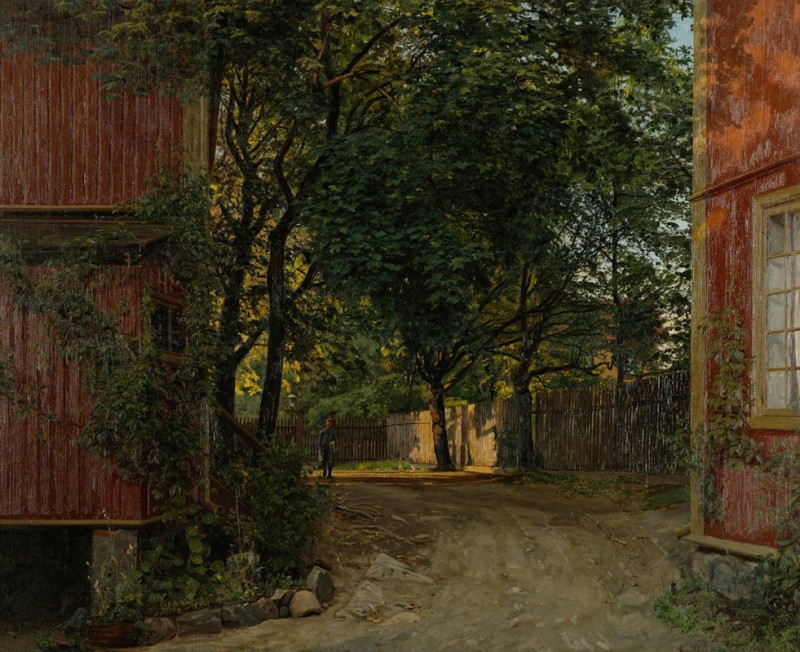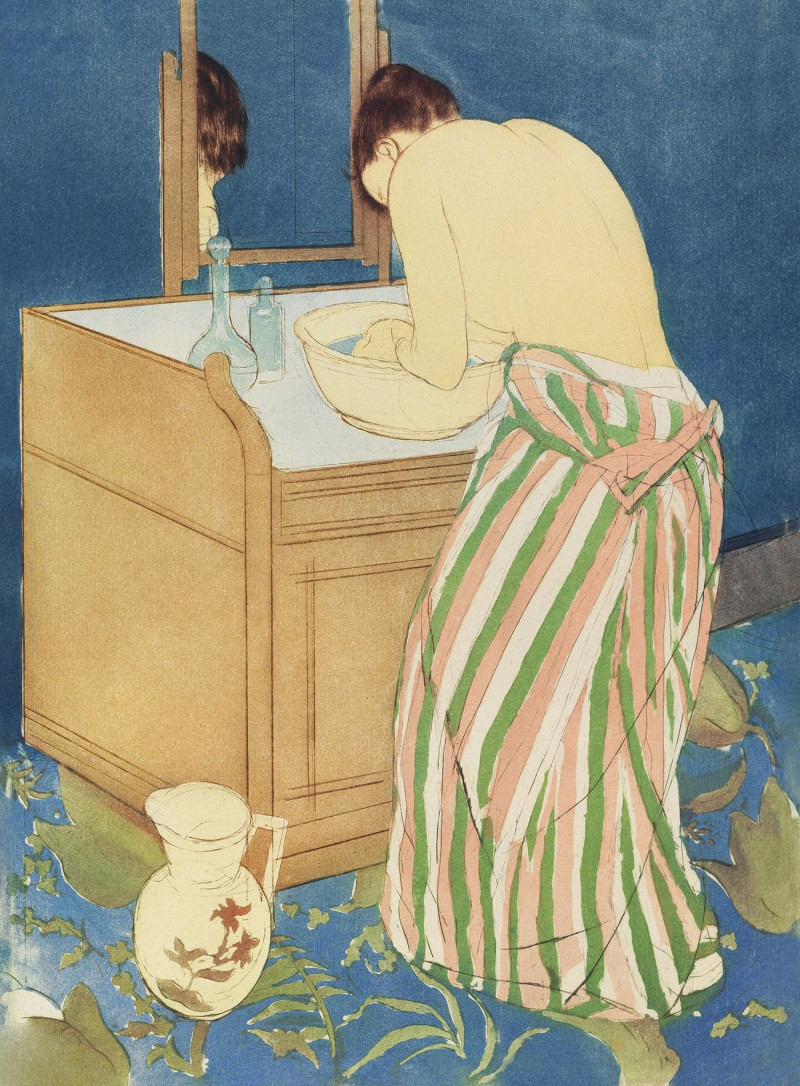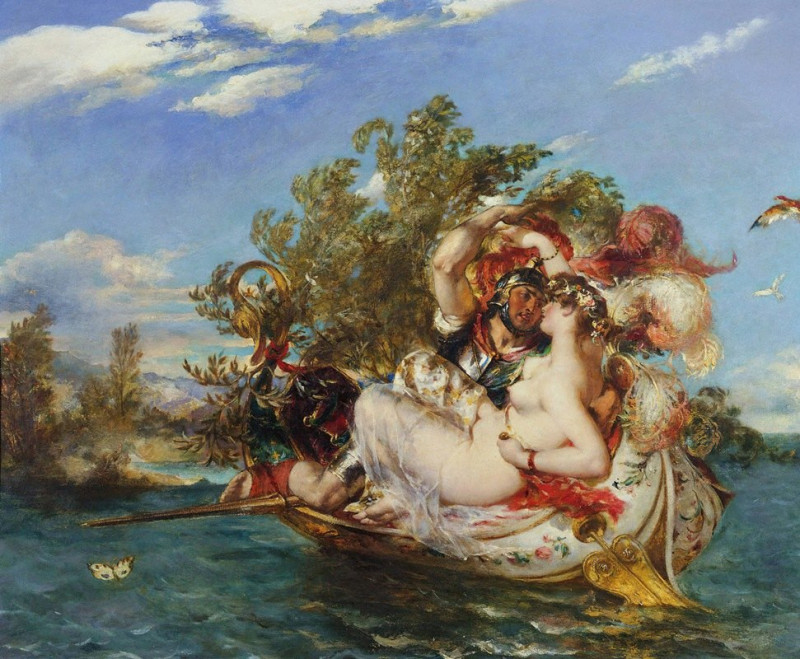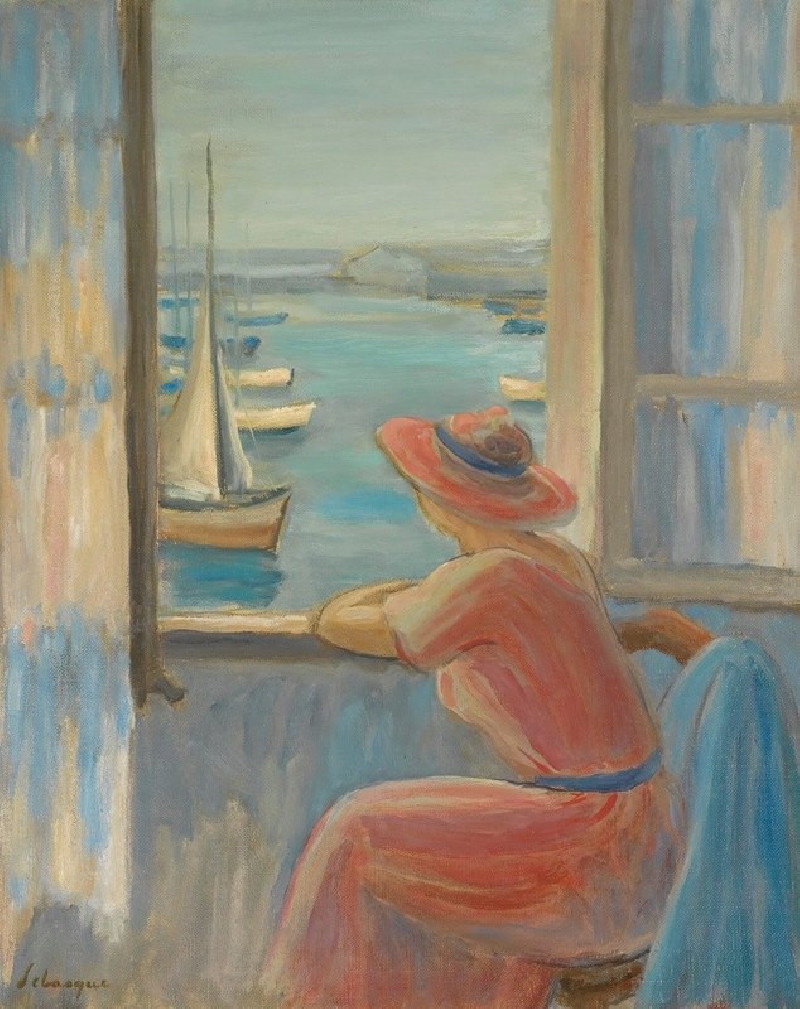Scalding the Hog (1678)
Technique: Giclée quality print
Recommended by our customers
More about this artwork
Adriaen van Ostade's "Scalding the Hog," painted in 1678, offers a vivid glimpse into rural Dutch life in the 17th century. In this remarkably detailed scene, the focus is a communal activity that combines work with social interaction, characteristic of village life at the time.The painting portrays the moment when villagers gather to scald a hog, an essential step in preparing the animal for butchering and preservation. The central action shows several men engaging in the strenuous activity of scalding the hog in a large wooden tub, essential for loosening the hair for removal. Adjacent to this, various villagers, including children and a dog, observe or partake in the task, each rendered with individual care and attention to detail that brings a sense of life and character to their portrayals.The backdrop of the work is a rustic cottage surrounded by trees, with domestic details like baskets, a ladder, and climbing plants that frame the activity with an almost idyllic quality despite the labor-intensive work being depicted. Ostade's skill in using light, shadow, and texture brings a warmth to the scene, illustrating not just a moment of labor but a communal, almost festive gathering, underlining the social cohesion and shared responsibilities within village communities of the period.

